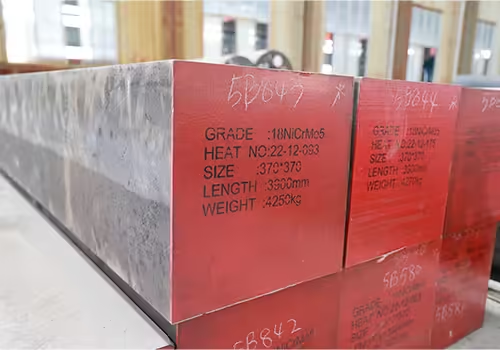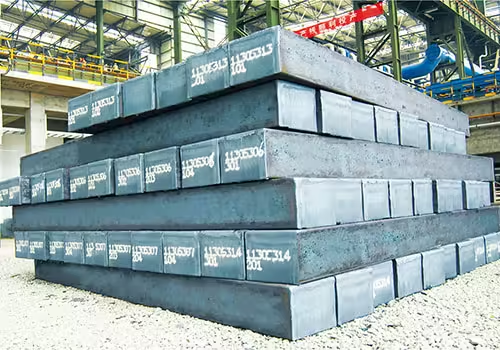
Why 1020 Stainless Steel is a Game-Changer
Table of Contents
Introduction


In the realm of materials engineering, few alloys have made as significant an impact as 1020 stainless steel. This remarkable material has revolutionized industries by offering an exceptional blend of strength, durability, and versatility. Whether you’re involved in construction, manufacturing, or the automotive sector, this alloy can elevate your projects to new heights. This blog delves into the reasons why 1020 stainless steel stands out as a game-changer, exploring its unique properties, diverse applications, and the numerous benefits it brings to the table.
What is 1020 Stainless Steel?
1020 stainless steel is a low-carbon steel alloy that has garnered widespread acclaim for its outstanding weldability, machinability, and strength. With a carbon content of approximately 0.20%, it is softer and more ductile compared to higher-carbon steels. This distinctive composition makes it an ideal choice for a broad spectrum of applications, ranging from structural components to intricate machinery parts.
Key Properties:
- Low Carbon Content: This feature significantly enhances the material’s weldability and formability, making it easier to work with during fabrication.
- High Tensile Strength: The alloy provides exceptional durability under stress, ensuring longevity and reliability in demanding applications.
- Excellent Machinability: Its ease of shaping and fabrication allows for precise manufacturing of complex parts, reducing production time and costs.
- Corrosion Resistance: While not as resistant as some higher-grade stainless steels, it performs well in environments with moderate exposure to moisture, making it suitable for a variety of settings.
Why 1020 Stainless Steel is a Game-Changer

1. Superior Weldability
One of the most notable attributes of this alloy is its superior weldability. Thanks to its low carbon content, the material significantly reduces the risk of cracking during the welding process. This characteristic makes it a top choice for fabricators and engineers who require reliable and efficient welding performance.
Benefits:
- Seamless Integration into Complex Designs: The material’s flexibility allows it to be incorporated into intricate and complex designs without compromising structural integrity.
- Reduced post-welding treatments, saving time and costs:Since the alloy minimizes issues like cracking, there’s less need for additional treatments after welding, saving both time and costs.
- Strong, Durable Welds: The welds produced are not only robust but also maintain the overall strength and stability of the structure, ensuring long-lasting performance.
2. Exceptional Machinability
This material is renowned for its ease of machining, which enables the precise fabrication of intricate parts. This property is especially valuable in industries like automotive and aerospace, where precision and accuracy are critical to the success of the project.
Benefits:
- Lower Tool Wear: The alloy’s machinability reduces wear on cutting tools, leading to lower maintenance and replacement costs.
- Faster Production Cycles: Its ease of processing allows for quicker manufacturing, which enhances overall efficiency and productivity.
- High-Quality Finishes: The material can achieve smooth, polished finishes with minimal additional effort, ensuring that the final product meets high aesthetic and functional standards.
3. Cost-Effective Solution
When compared to other stainless steel alloys, this low-carbon steel offers a cost-effective solution without sacrificing performance. Its widespread availability and ease of processing make it an economical choice for large-scale projects, where budget considerations are often paramount.
Benefits:
- Reduced Material and Fabrication Costs: The alloy’s affordability and ease of use translate into significant savings on both materials and fabrication processes.
- Ideal for Budget-Conscious Projects: Its cost-effectiveness makes it a practical option for projects with tight budgets, without compromising on quality or durability.
- Long-Term Savings: The material’s durability and low maintenance requirements ensure that it remains a cost-efficient choice over its lifespan, reducing the need for frequent repairs or replacements.
4. Versatility in Applications
1020 stainless steel is renowned for its exceptional versatility, making it a preferred material across a wide range of industries. Its unique combination of strength, durability, and ease of fabrication allows it to be used in diverse applications, from large-scale construction projects to precision automotive components. Engineers and designers often turn to 1020 stainless steel because it can be easily machined, welded, and formed into complex shapes without compromising its structural integrity. This adaptability ensures that it meets the demanding requirements of various sectors, including construction, automotive, machinery, and more.
Common Applications:
- Structural Frameworks in Buildings and Bridges: 1020 stainless steel is widely used in the construction of structural frameworks for buildings, bridges, and other infrastructure projects. Its high strength-to-weight ratio and resistance to environmental factors such as corrosion make it an ideal choice for ensuring the longevity and safety of these structures.
- Machinery Parts like Gears and Shafts: In the machinery industry, 1020 stainless steel is commonly employed to manufacture critical components such as gears, shafts, and couplings. Its ability to withstand high stress and wear ensures reliable performance in demanding operational conditions.
- Automotive Components such as Chassis and Brackets: The automotive industry benefits from the use of 1020 stainless steel in the production of chassis, brackets, and other essential components. Its durability and resistance to fatigue make it suitable for parts that are subject to constant movement and vibration.
5. Environmental Benefits
In addition to its mechanical properties, 1020 stainless steel is also recognized for its environmental benefits, making it a sustainable choice for modern manufacturing. One of its most significant advantages is its recyclability, which allows it to be reused without losing its essential properties. This contributes to a circular economy, reducing the need for virgin materials and minimizing waste. Furthermore, the long lifespan and low maintenance requirements of 1020 stainless steel reduce its overall environmental impact, as it does not need to be replaced or repaired as frequently as other materials.
Benefits:
- Contributes to Sustainable Manufacturing Practices: By choosing 1020 stainless steel, manufacturers can support sustainable practices. Its recyclability and long service life align with the principles of reducing resource consumption and promoting environmental stewardship.
- Reduces Waste Through Recyclability: 1020 stainless steel can be recycled indefinitely without degrading its quality. This significantly reduces the amount of waste generated during production and disposal, contributing to a more sustainable industrial ecosystem.
- Lowers Energy Consumption During Production: The production process for 1020 stainless steel is relatively energy-efficient compared to other materials. Its ability to be recycled further reduces the energy required for manufacturing, as recycled steel can be processed with less energy than producing new steel from raw materials.
Comparison Table
To highlight the advantages of 1020 stainless steel, here’s a comparison with other common steel alloys:
| Property | 1020 Stainless Steel | 304 Stainless Steel | Carbon Steel (1045) |
|---|---|---|---|
| Carbon Content | 0.20% | 0.08% | 0.45% |
| Weldability | Excellent | Good | Moderate |
| Machinability | Excellent | Moderate | Good |
| Tensile Strength | High | Very High | High |
| Corrosion Resistance | Moderate | Excellent | Low |
| Cost | Low | High | Moderate |
Conclusion
1020 stainless steel is undeniably a game-changer in the world of materials engineering. Its unique combination of weldability, machinability, cost-effectiveness, and versatility makes it a preferred choice for a wide range of applications. Whether you’re designing a skyscraper, manufacturing machinery, or building a car, 1020 stainless steel offers the performance and reliability you need.
By choosing 1020 stainless steel, you’re not only investing in a high-quality material but also contributing to sustainable and efficient manufacturing practices. Embrace the potential of this remarkable alloy and take your projects to the next level!
FAQ
What industries commonly use 1020 stainless steel?
1020 stainless steel is widely used across various industries due to its versatility and cost-effectiveness. It is commonly found in construction for structural frameworks, in automotive for components like chassis and brackets, in manufacturing for machinery parts such as gears and shafts, and even in aerospace for certain lightweight components. Its strength, weldability, and machinability make it a reliable choice for engineers and designers in these fields.
How does 1020 stainless steel compare to 304 stainless steel?
1020 stainless steel and 304 stainless steel serve different purposes based on their properties. While 304 stainless steel offers better corrosion resistance due to its higher chromium and nickel content, 1020 stainless steel excels in weldability, machinability, and cost-efficiency. This makes 1020 stainless steel more suitable for applications where corrosion resistance is not the primary concern, but ease of fabrication and affordability are key.
Can 1020 stainless steel be used in outdoor applications?
Yes, 1020 stainless steel can be used in outdoor applications, especially when it is coated or treated to enhance its corrosion resistance. While it does not have the same level of natural corrosion resistance as higher-grade stainless steels like 304, proper surface treatments or protective coatings can make it a viable option for outdoor environments.
Is 1020 stainless steel recyclable?
Absolutely. 1020 stainless steel is 100% recyclable, making it an environmentally friendly material choice. Its recyclability supports sustainable manufacturing practices by reducing waste and conserving resources, aligning with the principles of a circular economy.
What are the limitations of 1020 stainless steel?
The primary limitation of 1020 stainless steel is its moderate corrosion resistance, which makes it less suitable for highly corrosive environments compared to alloys like 304 stainless steel. While it performs well in many applications, it may require additional treatments or coatings when exposed to harsh conditions to prevent corrosion and ensure longevity.






